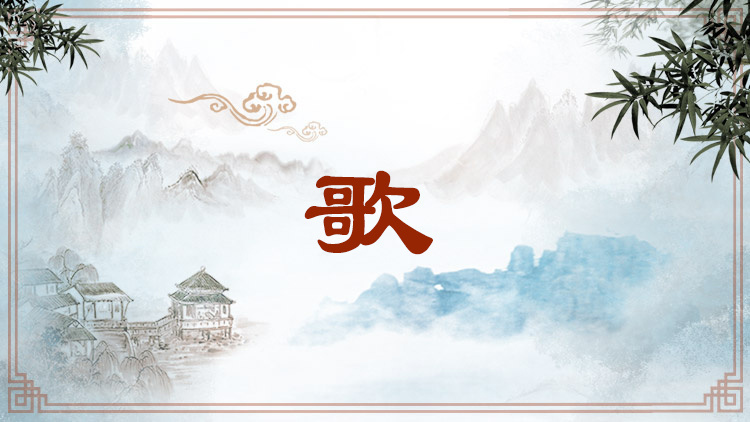歌 Song

一种篇幅短小、可以吟唱的韵文作品,是集文学、音乐甚至是舞蹈于一体的可以歌唱的文学艺术创作形式。在中国古代,歌与诗的区别是:“歌”能入乐歌唱,“诗”通常不入乐歌唱。广义的歌包括了童谣、民谣;狭义的歌与谣有所区别:有固定曲调和音乐伴奏的是歌,没有固定曲调的清唱为谣。歌大多为民间创作的民歌,如北朝民歌《敕勒歌》等;也有小部分是由文士等个人创作的作品,如刘邦的《大风歌》、李白的《子夜吴歌》等。“歌”属于中国古代诗歌艺术的早期形态,古人一般将其归入乐府诗,现在则与诗合称“诗歌”。
Song is a kind of short, rhyming composition. It is a form of artistic creation combining literature, music, and even dance which can be sung. The difference between songs and poems in ancient China is that the former could be made into music and sung, whereas the latter could not. In a broad sense, the term includes children's ballads and folk ballads. In a narrow sense, songs and ballads are different. Songs have a fixed melody and musical accompaniment, while ballads do not. Songs were created mostly by folk musicians, such as the folk song "Song of the Chile" during the Northern Dynasties. A small number of songs, however, were written by members of the literati, like "Ode to the Great Wind" by Liu Bang and "The Midnight Melody of the Land of Wu" by Li Bai. Songs are one of the early forms of ancient Chinese poetic art and were generally classified as yuefu (乐府) poetry in ancient China. In modern times, they are called poetic songs as a part of poetry.
引例 Citation:
◎曲合乐曰歌,徒歌曰谣。(《诗经·魏风·园有桃》毛传)
配上曲调、有音乐伴奏的叫作歌,没有固定曲调的清唱叫作谣。
Words sung with the accompaniment of music are called songs, and mere singing and chanting are called ballads. (Mao's Version of The Book of Songs)
推荐:教育部 国家语委
供稿:北京外国语大学 外语教学与研究出版社
责任编辑:钱耐安





